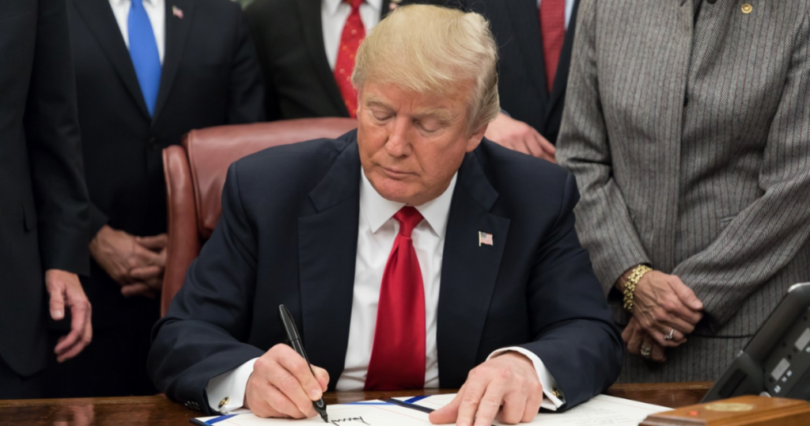Trump to Merge USPS With Commerce Department
President Donald Trump announced on Friday, Feb. 21, 2025, that his administration is considering merging the United States Postal Service (USPS) with the Commerce Department to enhance efficiency and address the Postal Service’s significant financial losses.
Speaking from the Oval Office, President Trump emphasized the need for a functional and financially stable Postal Service. He stated, “We want to have a post office that works well and doesn’t lose massive amounts of money, and we’re thinking about doing that, and will be a form of a merger, but it’ll remain the Postal Service.”
The USPS reported a staggering $9.5 billion net loss for the fiscal year ending Sept. 30, 2024, a sharp increase from the $6.5 billion loss reported the previous year. The agency attributed this financial downturn primarily to escalating worker compensation and pension liabilities.
President Trump expressed his dissatisfaction with the USPS’s financial performance, describing it as a “tremendous loser” for the country. He suggested that integrating the Postal Service with the Commerce Department or leveraging talent from other areas could mitigate these losses and improve operations.
The proposed merger would represent a significant restructuring of the agency responsible for mail delivery across the nation. However, the President did not specify whether Commerce Secretary Howard Lutnick would oversee the USPS if the merger proceeds.
Historically, the USPS has been an independent entity since its establishment, with Benjamin Franklin serving as the first postmaster general. The agency has faced mounting challenges, including a decline in first-class mail volume and increasing retiree benefit costs, leading to cumulative losses of $87 billion between 2007 and 2020.
In his first term, President Trump proposed privatizing the Postal Service, aiming to enhance competitiveness and operational efficiency. However, this initiative encountered resistance from Congress, which holds constitutional authority over the Postal Service under the Postal Clause.
The President’s current proposal to merge the USPS with the Commerce Department raises questions about executive authority, as Congress maintains control over the Postal Service. This constitutional oversight could present challenges to implementing such a merger without legislative approval.
Postmaster General Louis DeJoy, appointed in 2020, announced his intention to step down earlier this week, urging the USPS board to identify his successor. During his tenure, DeJoy introduced a 10-year plan aimed at modernizing the Postal Service and reducing costs. Despite these efforts, financial losses persisted, prompting further scrutiny of the agency’s operations.
The USPS’s financial struggles have been exacerbated by a decline in traditional mail usage, as digital communication becomes more prevalent. First-class mail volume has significantly decreased since 2000, contributing to the agency’s ongoing financial challenges.
Privatization of the Postal Service has been a topic of debate, with proponents arguing it could lead to increased efficiency and reduced taxpayer burden. However, critics contend that privatization could result in higher shipping costs, slower deliveries, and reduced services, particularly in rural areas.
The USPS operates under a “universal service obligation,” ensuring consistent rates and delivery standards nationwide. A shift toward privatization or a merger with the Commerce Department could jeopardize this commitment, potentially impacting service quality and accessibility for many Americans, per the New York Post.
As the administration explores this potential merger, it must navigate constitutional considerations, congressional oversight, and public opinion. The outcome of this proposal could have far-reaching implications for the future of mail delivery and federal agency operations in the United States.
President Trump’s consideration of merging the USPS with the Commerce Department aims to address the Postal Service’s longstanding financial issues. While the proposal seeks to enhance efficiency and reduce losses, it faces constitutional, legislative, and public hurdles that must be carefully evaluated.
Scroll down to leave a comment and share your thoughts.


Leave a Comment